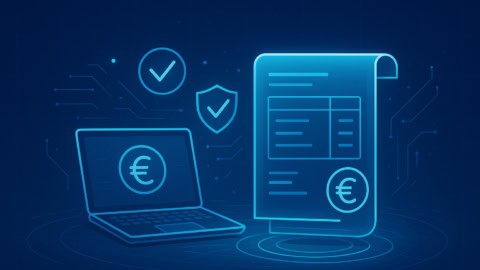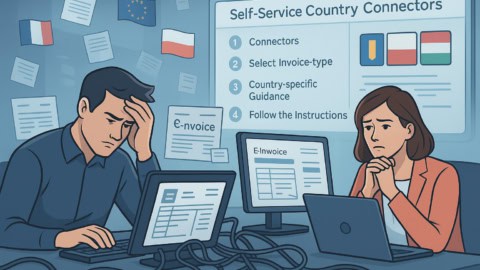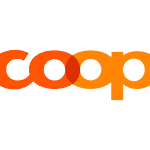Building a thorough e-invoicing request for proposal (RFP) is crucial to ensuring the success of your future e-invoicing solution. While the process can seem time-consuming, a clear and well-managed RFP process for e-invoicing helps you clearly define your needs, align internal stakeholders, and select the right provider for long-term compliance and scalability. Too often, businesses rush the process or overlook future requirements, resulting in solutions that fit today’s challenges but not tomorrow’s.
This guide outlines what a strong RFP process for e-invoicing looks like and how to approach it strategically to secure the best outcome for your organisation.
For a deeper look at each stage, including a full checklist of questions to ask potential vendors, download our white paper E-invoicing for Enterprises: A Buyer’s Guide.
TL;DR – key points at a glance
- A successful e-invoicing request for proposal aligns your internal teams before involving vendors
- The RFP process for e-invoicing should balance current needs with future scalability and compliance
- A strong vendor brief provides clarity on your technical setup, pain points, and business goals
- Evaluating vendors on integration, monitoring, and support is just as crucial as pricing
- Transparency around budget and expectations saves time and ensures better vendor alignment
- RFP questions must be shaped collaboratively across IT, finance, procurement, and compliance teams
What a typical e-invoicing request for proposal process looks like
While every RFP process is different, most will follow a timeline similar to the below:
| Stage | Task | Timeline | Responsibility |
| Preparation | Compiling a vendor brief | 4-6 weeks | Internal teams |
| Preparation | Compiling an RFP questionnaire | 4-6 weeks | Internal teams |
| Submission | Sending brief and RFP document to the vendor | – | Internal teams |
| Clarification | Review by vendor and submission of clarifying questions | 1-2 weeks | Vendor |
| Clarification | Answering vendor’s clarifying questions | 1 week | Internal teams |
| Completion | Completion and return of the questionnaire by the vendor | 1-2 weeks | Vendor |
Compiling a successful RFP
In order to give yourself the best possible chance of selecting the most suitable solution for your business, there are two key documents you must provide to prospective suppliers: a detailed brief explaining your current setup and future needs, and a comprehensive set of questions.
In the following sections, we’ll break down what you should include in your vendor brief and which questions to ask to ensure your e-invoicing request for proposal covers all relevant areas, from compliance and integration, to security, scalability and support.
What to include in your vendor brief
The better your prospective vendor understands your current situation and what you’re looking for, the easier it will be for both parties to see if the relationship could be successful. In order to provide vendors with a complete picture, be sure to include the following areas in your brief:
1. Current technical requirements
Clearly outline your current invoicing processes, including the platforms you use (e.g. ERP systems), the number and type of invoices processed monthly, supported formats and protocols, compliance obligations, and any current integration touchpoints. Be specific about which operations are handled in-house, and highlight any custom developments or workflows that a new provider would need to support.
This technical snapshot will allow vendors to understand how their solution can interface with your existing infrastructure.
2. Expected future changes
Share any anticipated shifts in your business that may affect your e-invoicing needs over the next 2–5 years. This might include entering new markets with different regulatory requirements, increasing invoice volumes, consolidating ERP systems, or adopting a shared services model.
By outlining future considerations, you enable vendors to recommend scalable, future-ready solutions rather than short-term ones that may quickly become obsolete.
3. Major pain points
Be candid about what isn’t working today. Whether it’s limited data visibility or too much manual effort, highlight the key friction points causing inefficiencies or risks.
Understanding your frustrations allows suppliers to address how their offering can alleviate these issues, in turn making their proposals easier to assess.
4. Your key goals
Describe what success looks like for your organisation. Are you aiming for full automation, improved partner onboarding times, compliance with upcoming mandates, reduced total cost of ownership, or all of the above?
Clarifying your goals helps vendors frame their responses in a way that shows how they contribute to achieving your strategic objectives.
5. A projected budget
While providing an exact number may not be possible,
Even a broad budget range helps vendors position their proposals appropriately. If you’re unsure, it’s helpful to indicate whether you expect an enterprise-grade solution, a mid-market tool, or a leaner setup with room for growth.
Budget transparency leads to more realistic and aligned proposals, reducing time wasted on incompatible offers.
Compiling questions for your e-invoicing request for proposal
Once your vendor brief is ready, the next step is compiling the right set of questions. This stage determines how well you’ll be able to compare providers, and ultimately, how successful your e-invoicing solution will be.
Involve all possible stakeholders
Start by gathering input from all relevant parts of your organisation, not only from those directly involved in invoicing or finance. IT, procurement, tax, compliance, and even operations teams will all have valuable perspectives on what’s required for a solution to succeed across the business. Bringing these voices together helps uncover hidden needs and ensures your chosen solution integrates seamlessly with existing systems and future workflows.
Consider the future
Just as important as ensuring all relevant parties have input, is prioritising future performance, particularly if your business operates across globally. Your RFP should reflect both your current pain points and where your organisation aims to be in the next three to five years. Consider future market entries, changing mandates, increased invoice volumes, and ERP migrations/complications. Providers that can demonstrate adaptability and long-term partnership potential will serve you better than those offering a quick fix.
Structure your questions sensibly
To make your evaluation as comprehensive as possible, it is wise to structure your RFP questionnaire around the following key topic areas:
- Compliance, certifications and regulatory requirements
- Scalability and performance
- Integration and data handling
- Invoice processing and document management
- Monitoring, reporting and error resolution
- Security and data protection
- Implementation and support
Covering all these dimensions ensures you’re assessing vendors on both functionality and long-term value. As a start, here are 21 questions to ask in your e-invoicing RFP.
Want more information on managing an effective RFP process for e-invoicing?
Download our full white paper, E-invoicing for Enterprises: A Buyer’s Guide, for a comprehensive look at how to make your e-invoicing request for proposal a success. In it you’ll find an extensive checklist of questions every enterprise should ask prospective providers, plus detailed guidance on defining requirements, assessing proposals, and managing vendor selection with confidence.
Alternatively, if you want information relating to your specific situation, feel free to get in touch! Our e-invoicing experts would be more than happy to show you how.

























